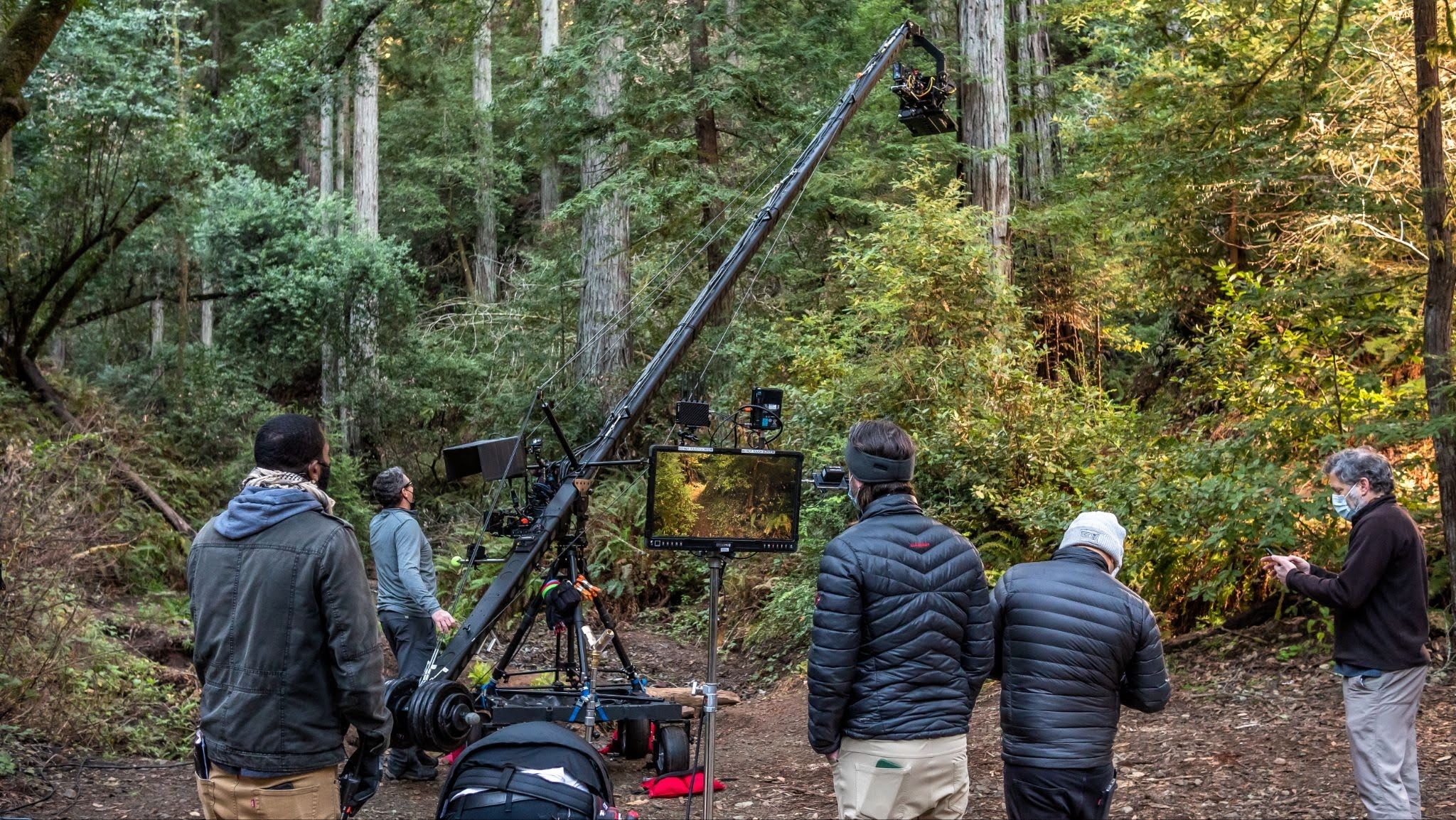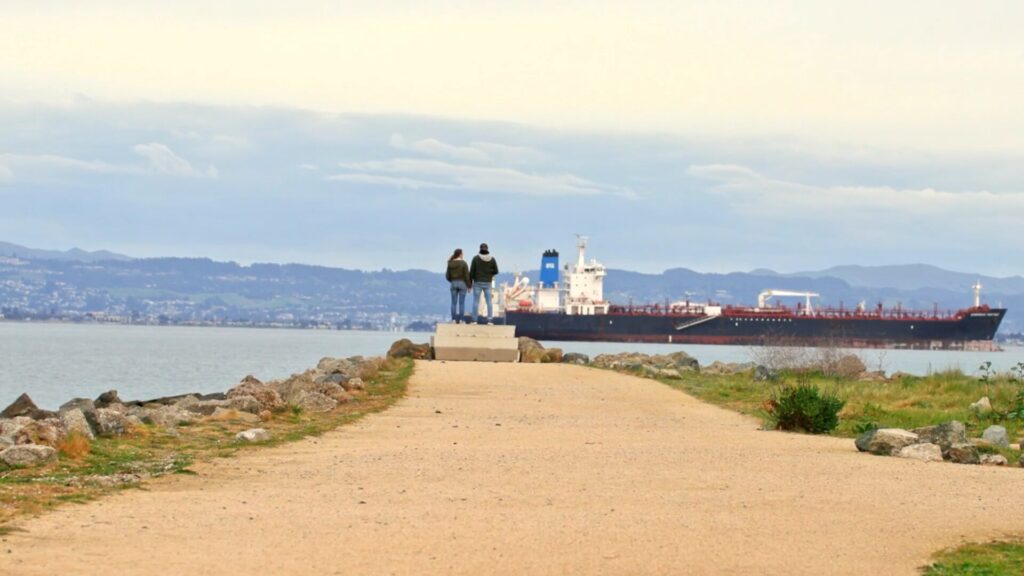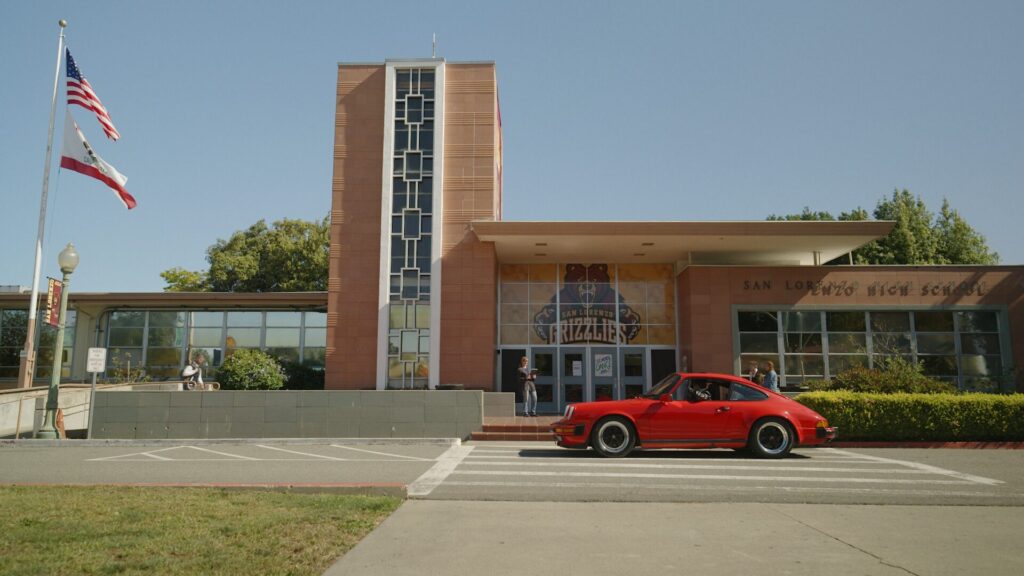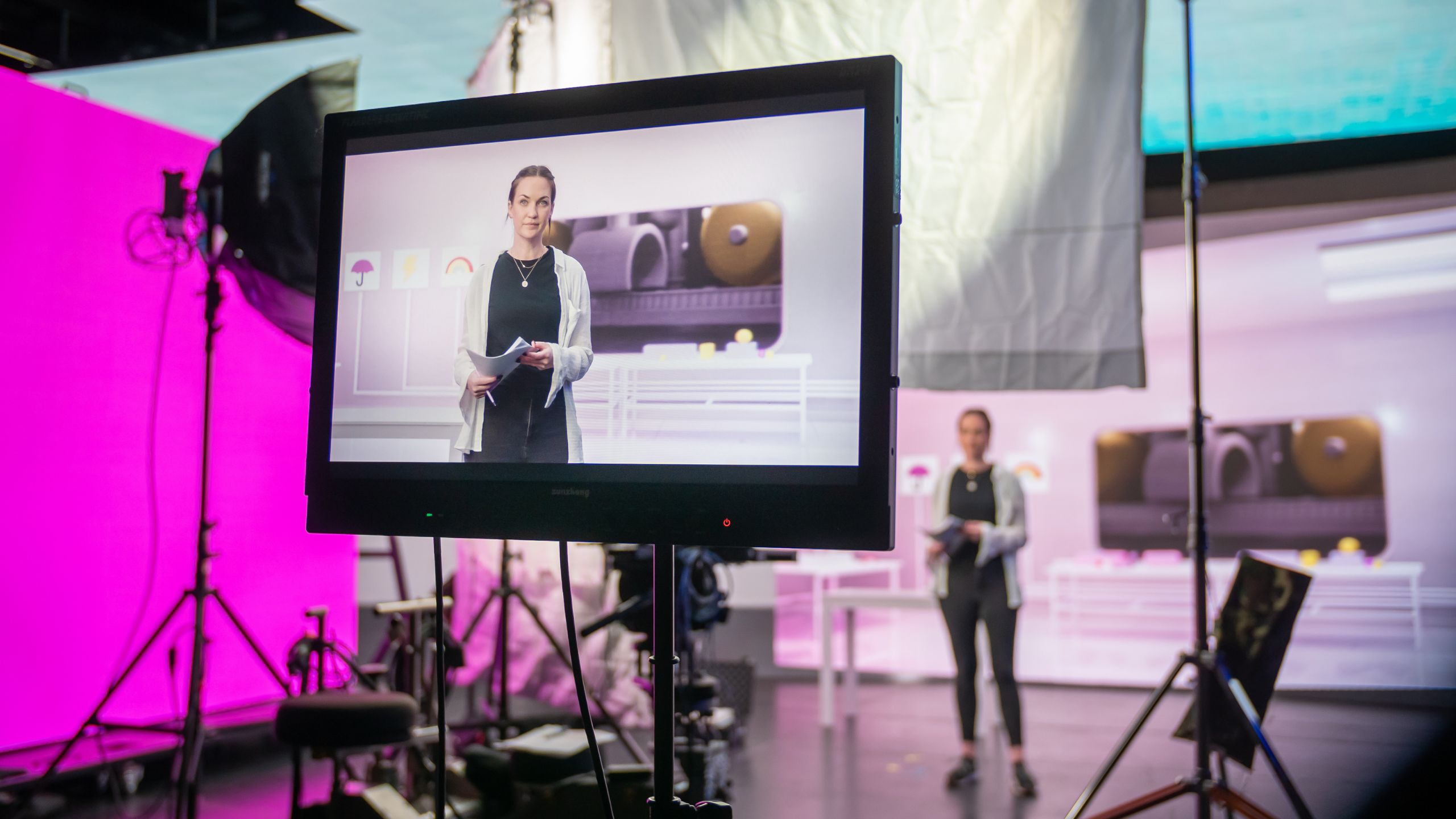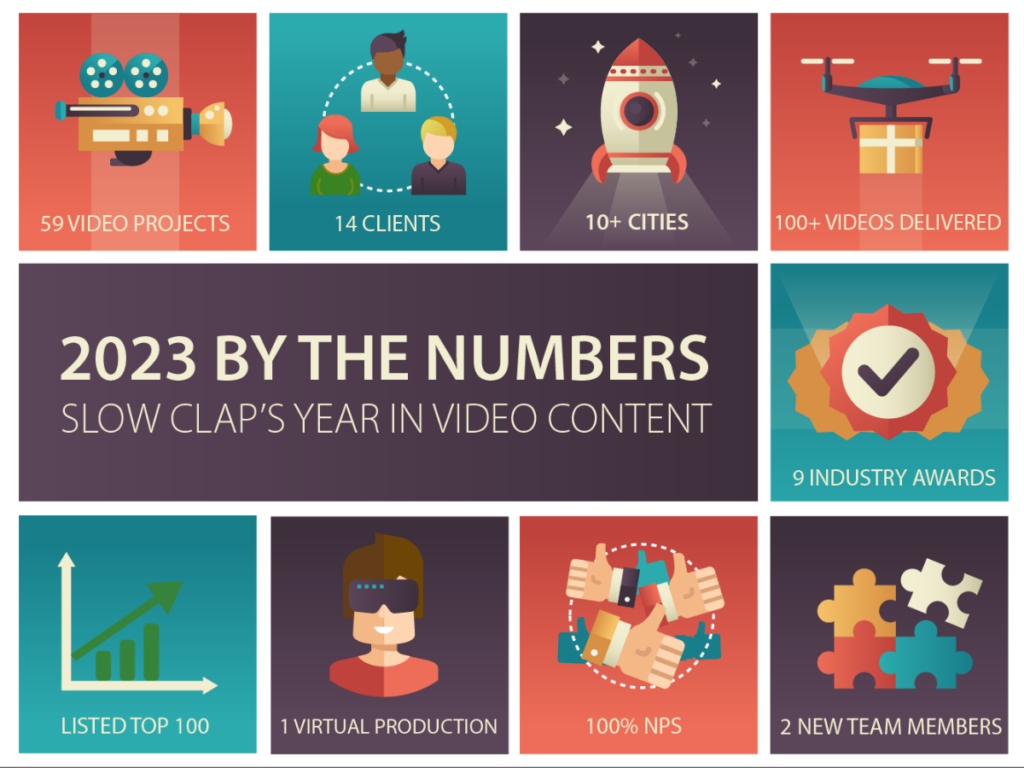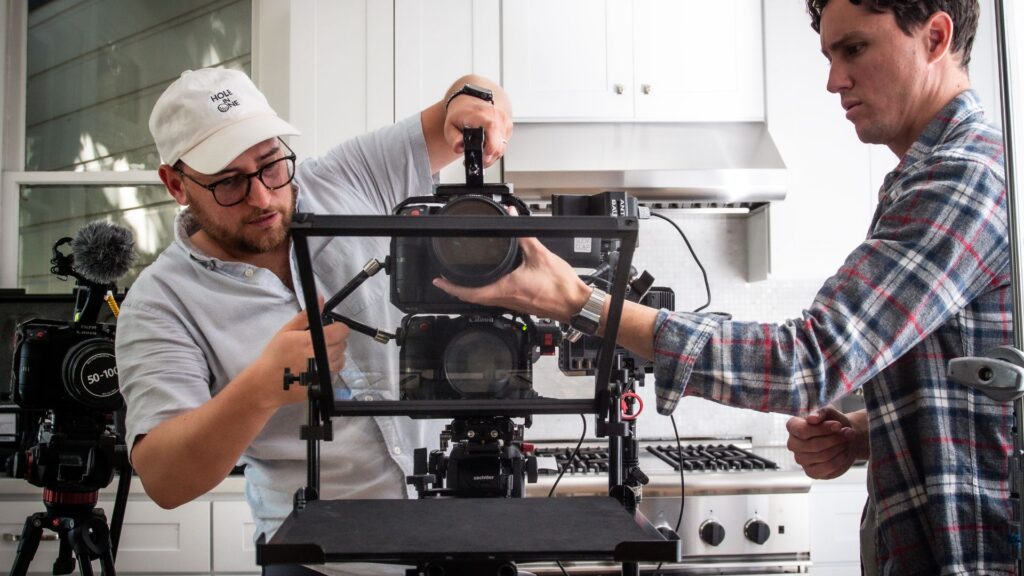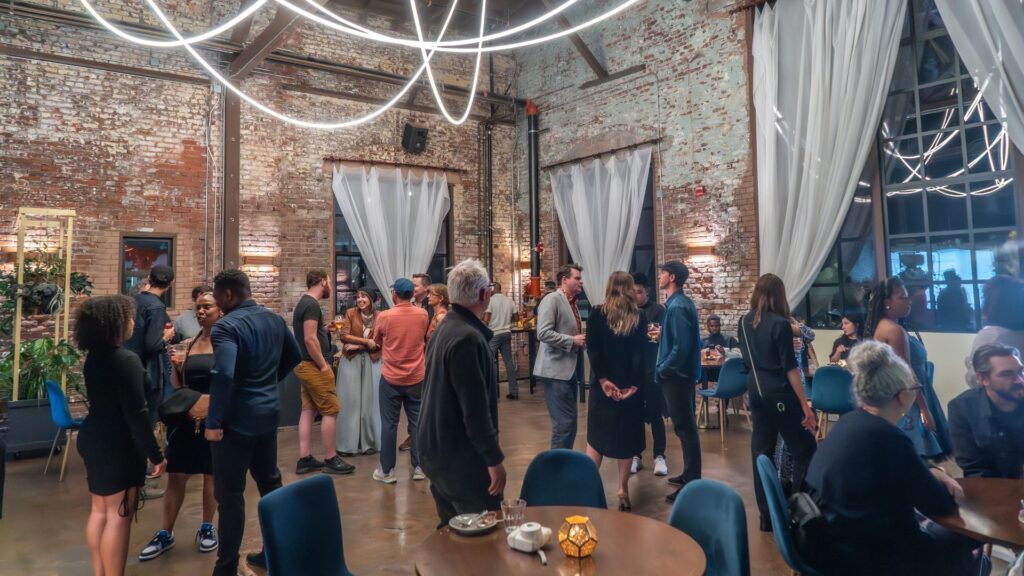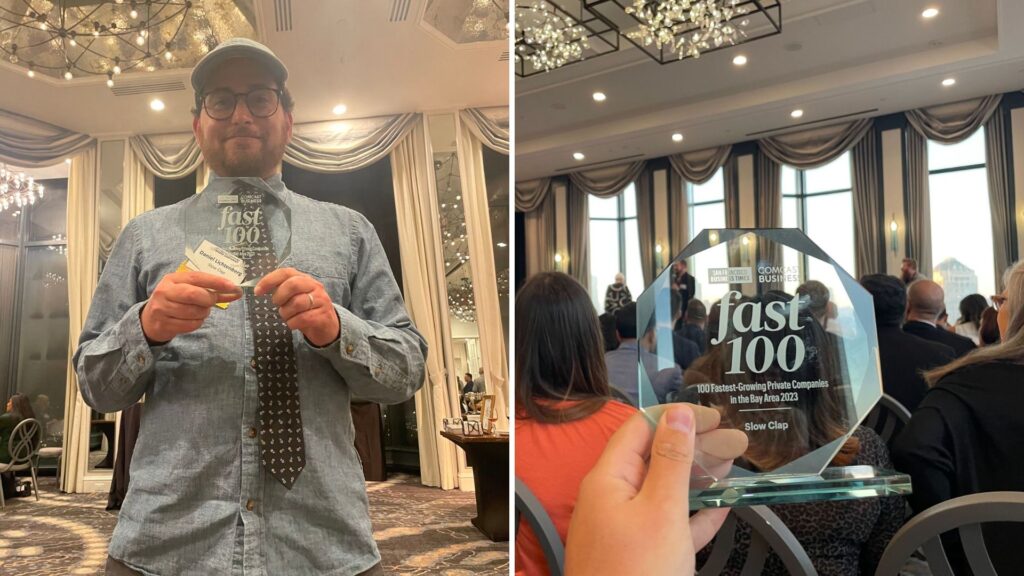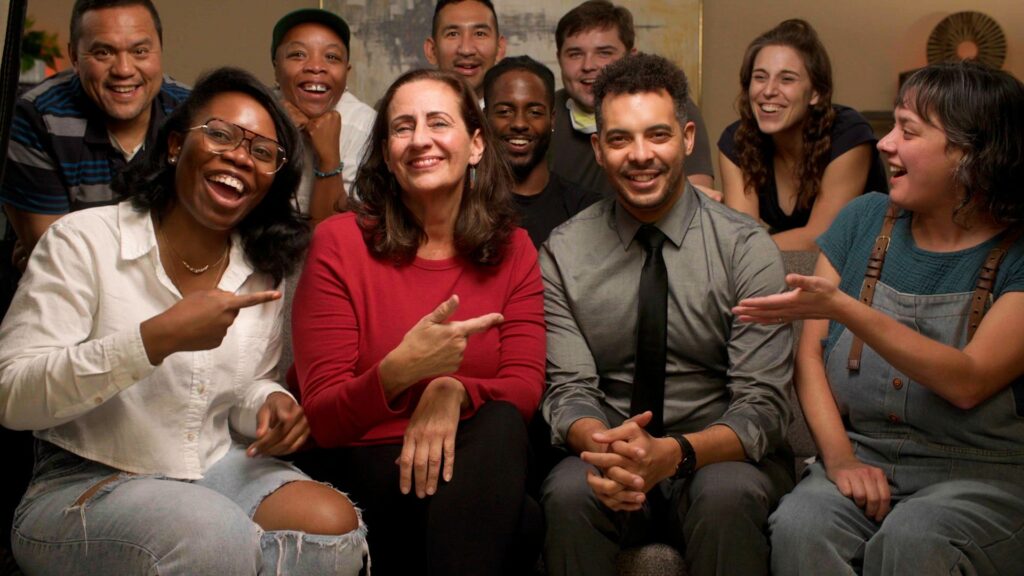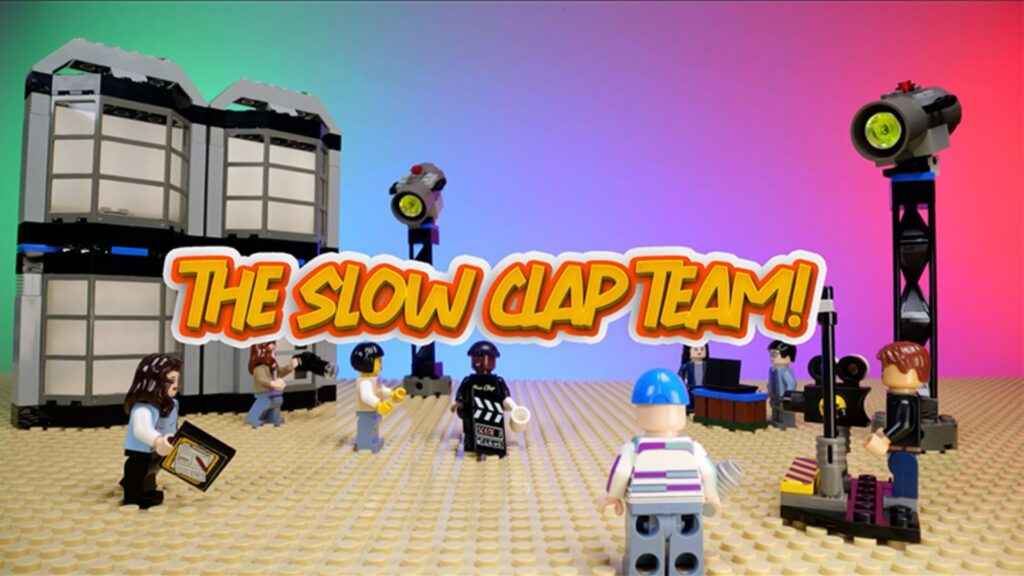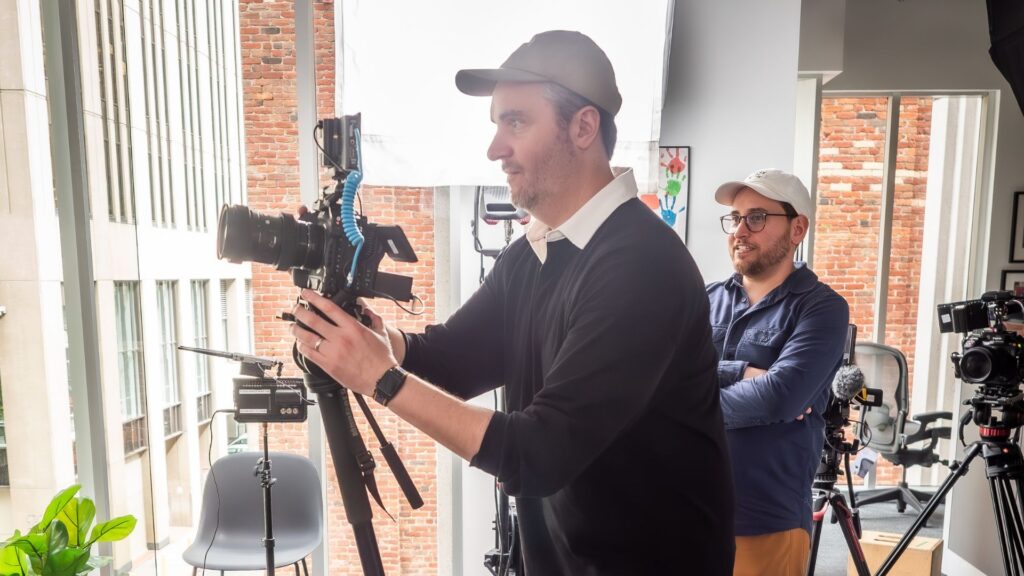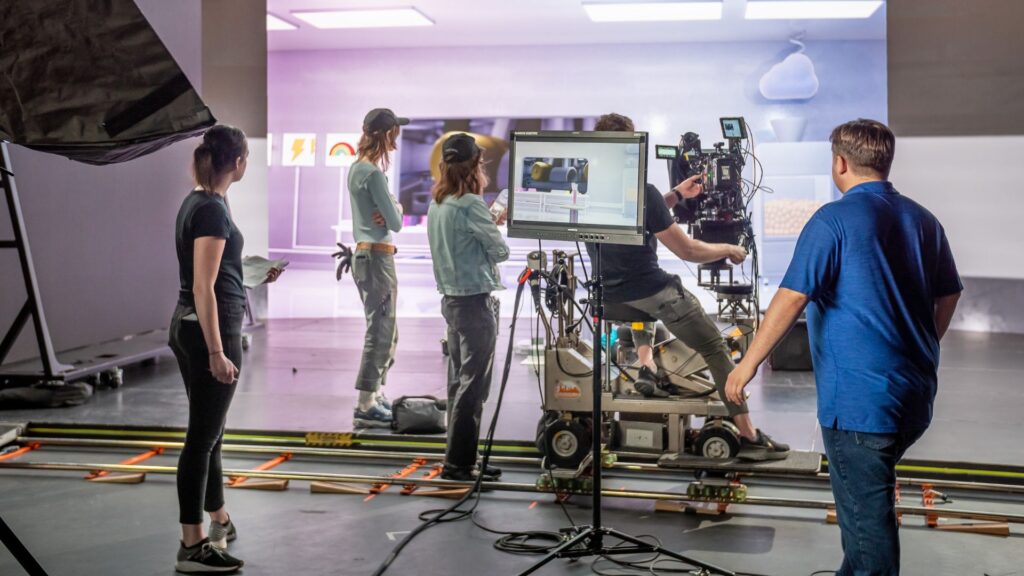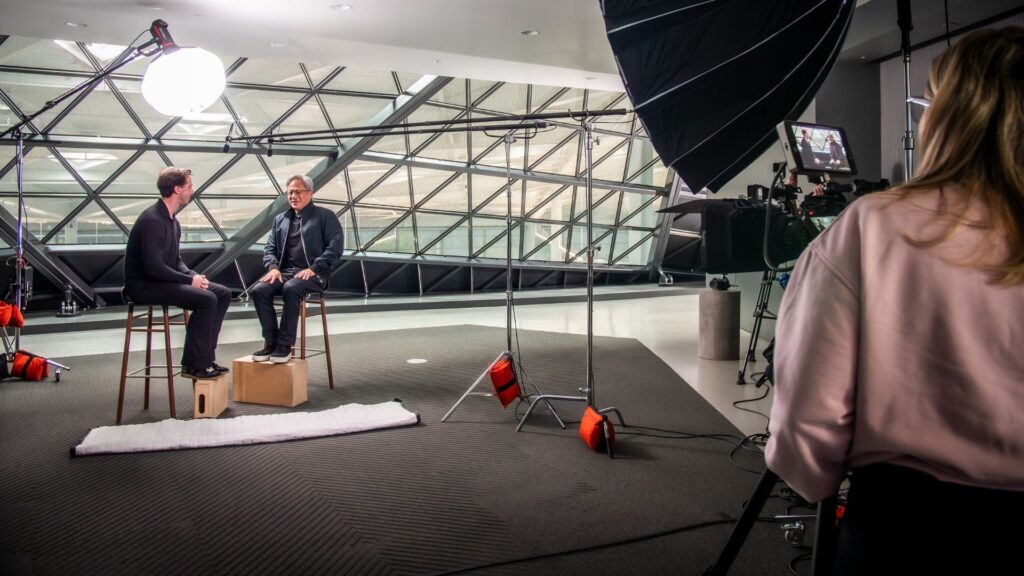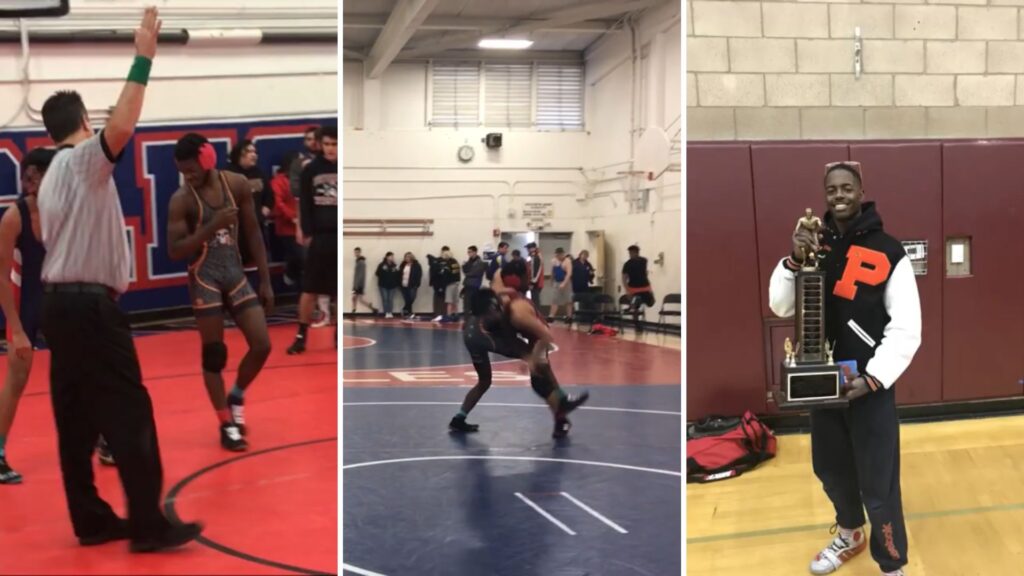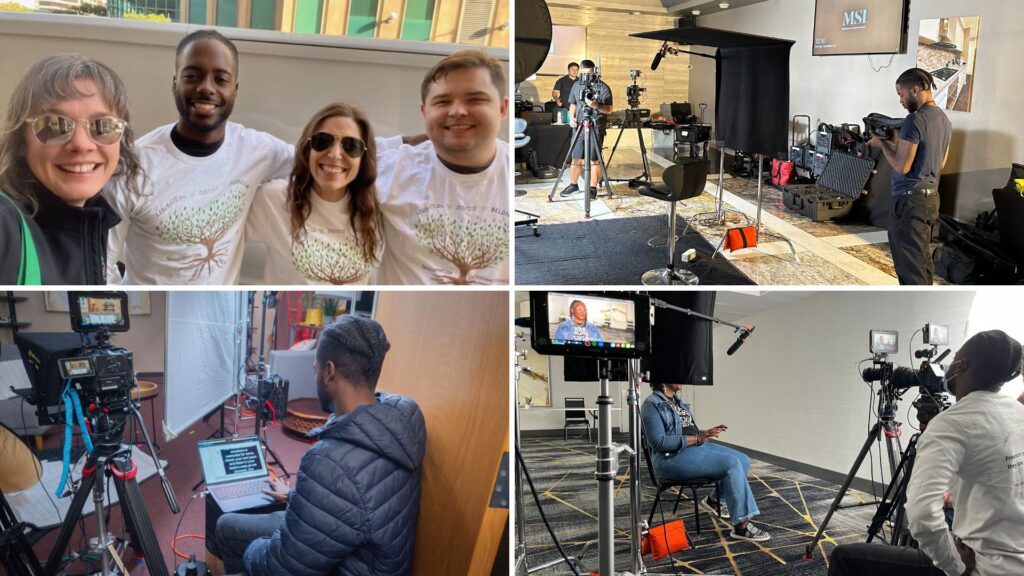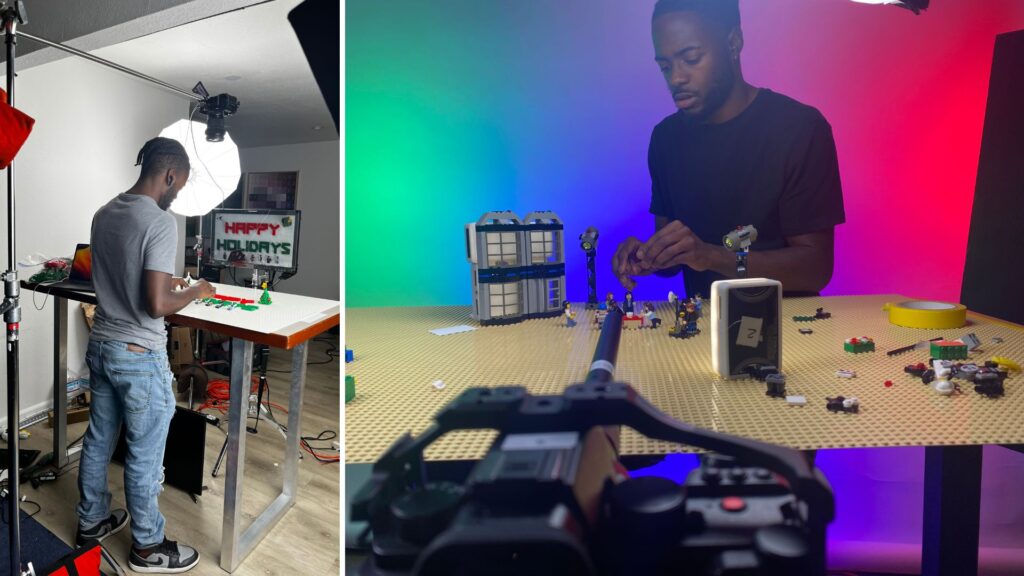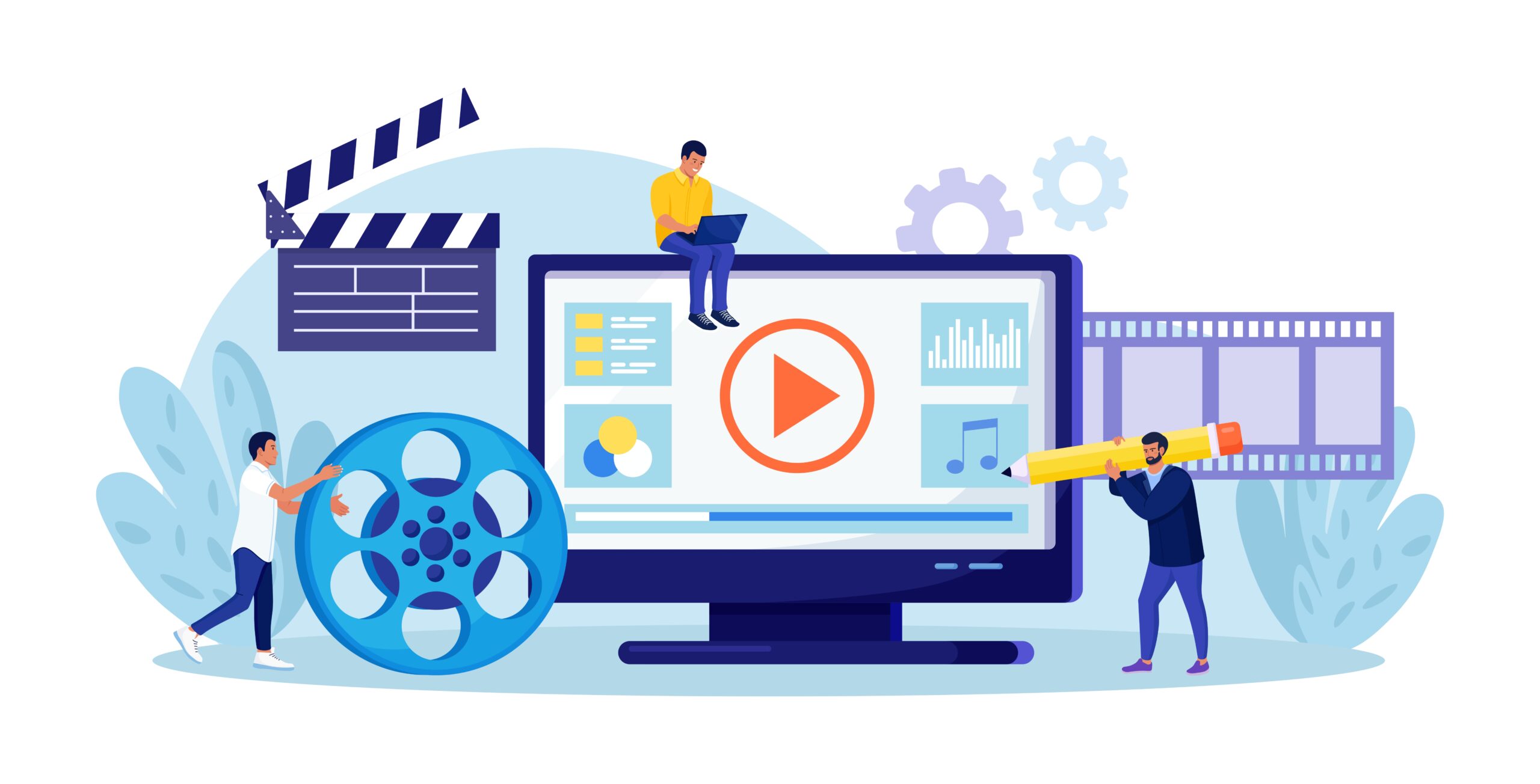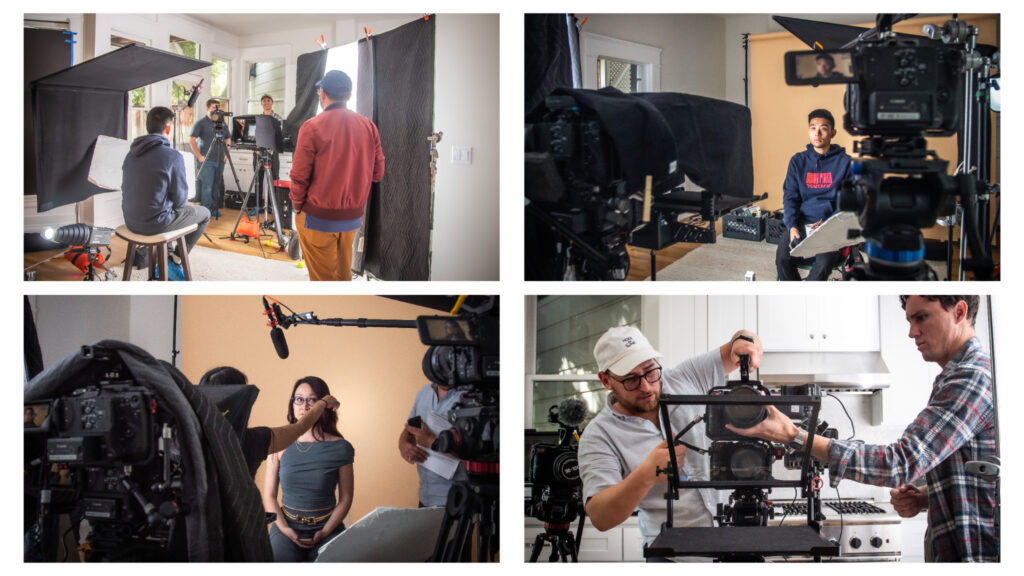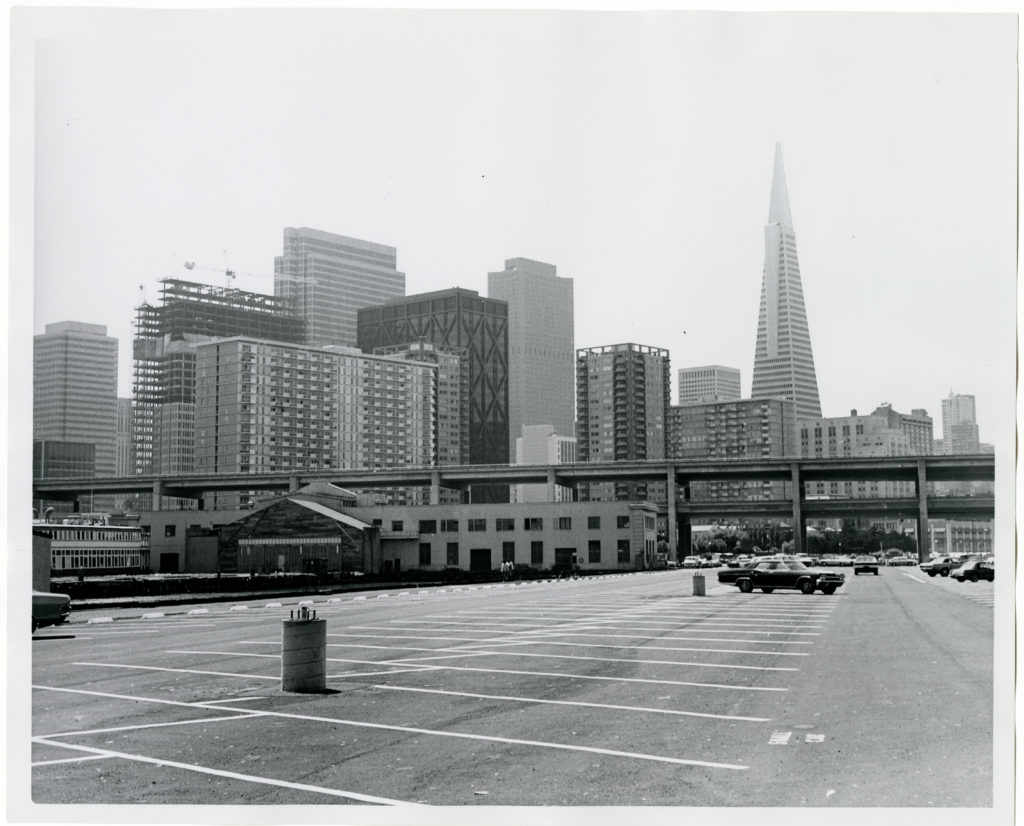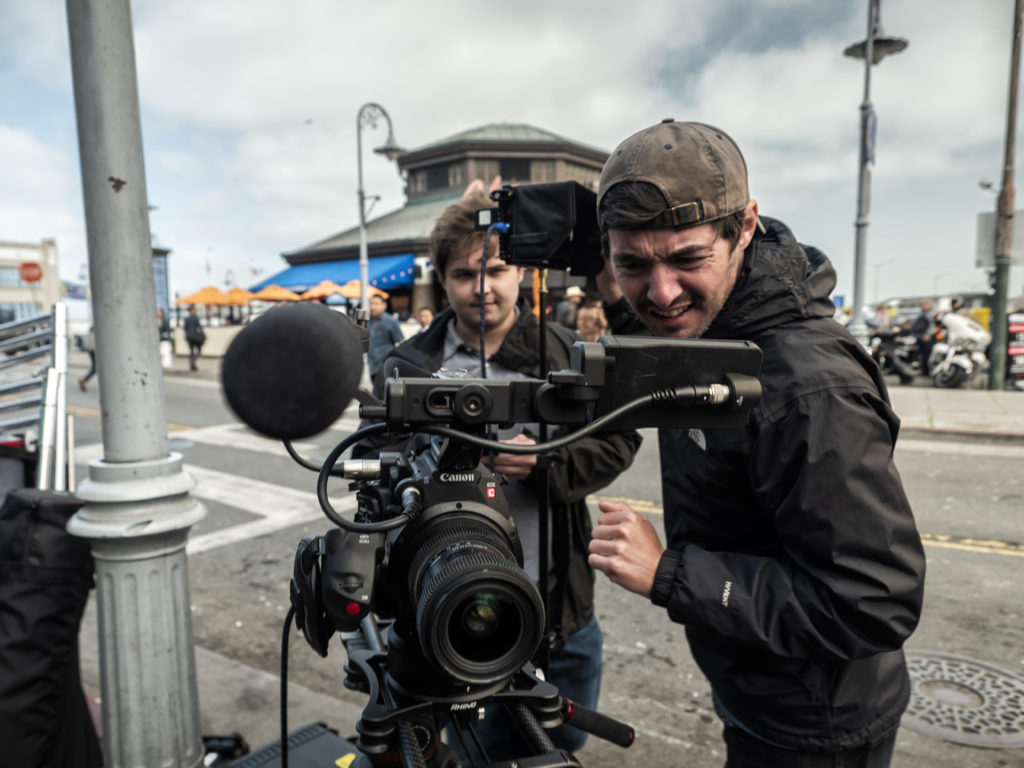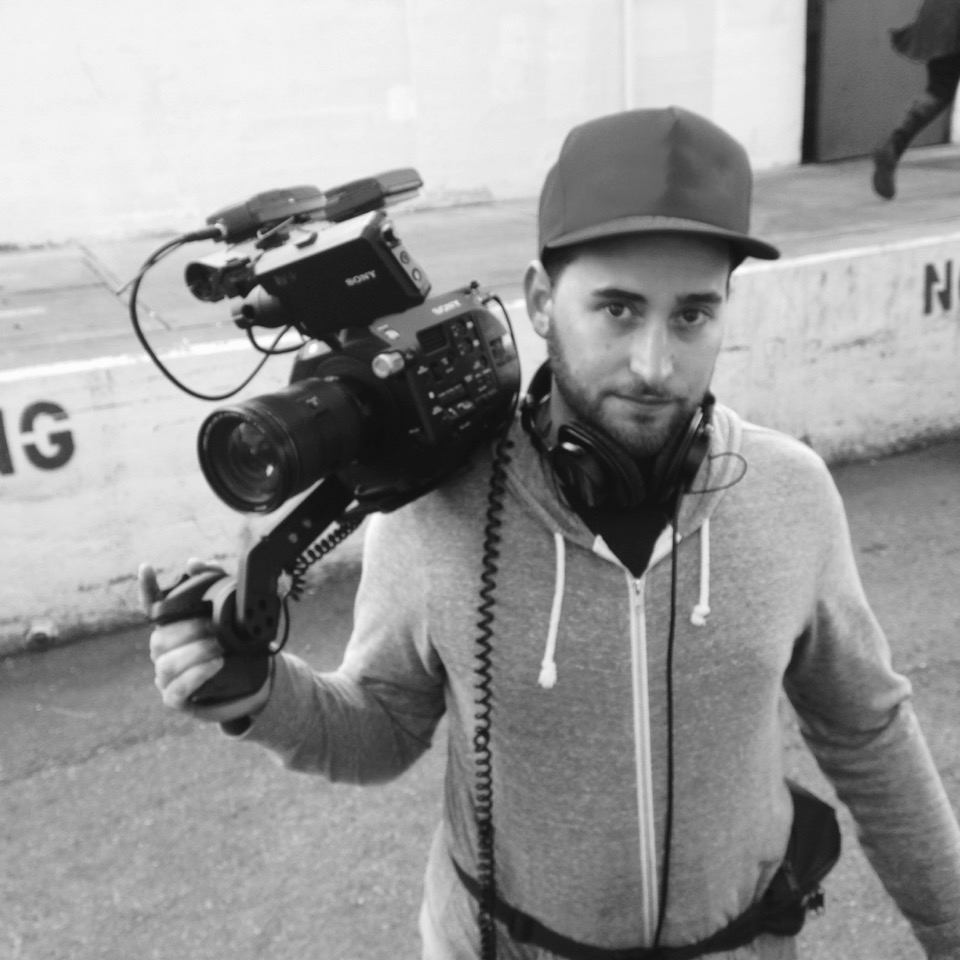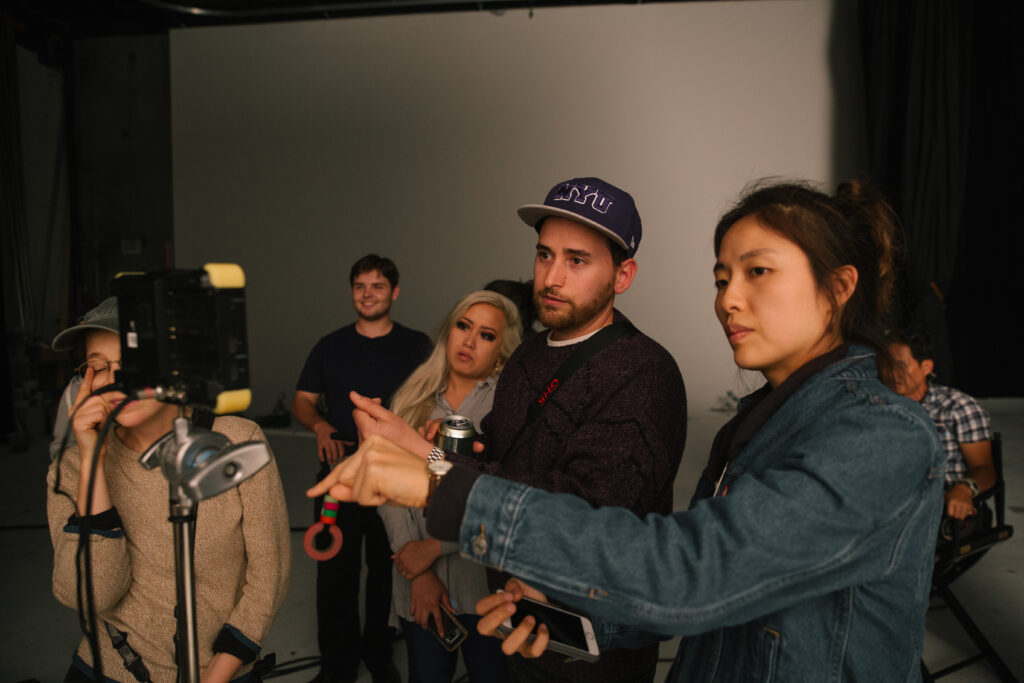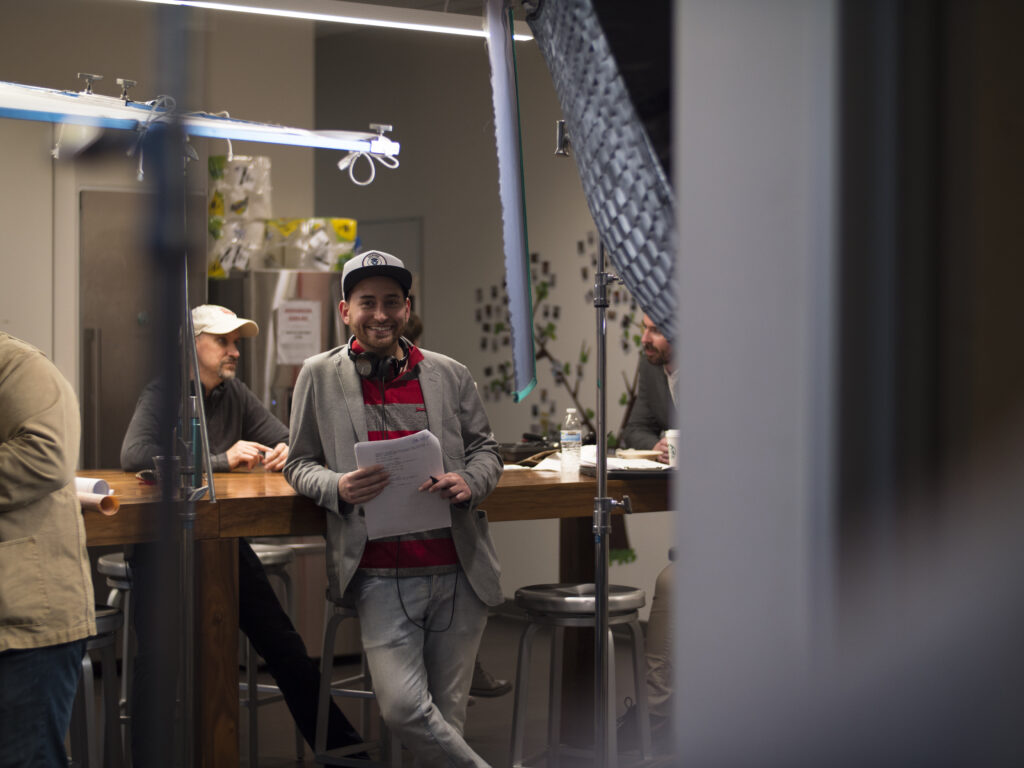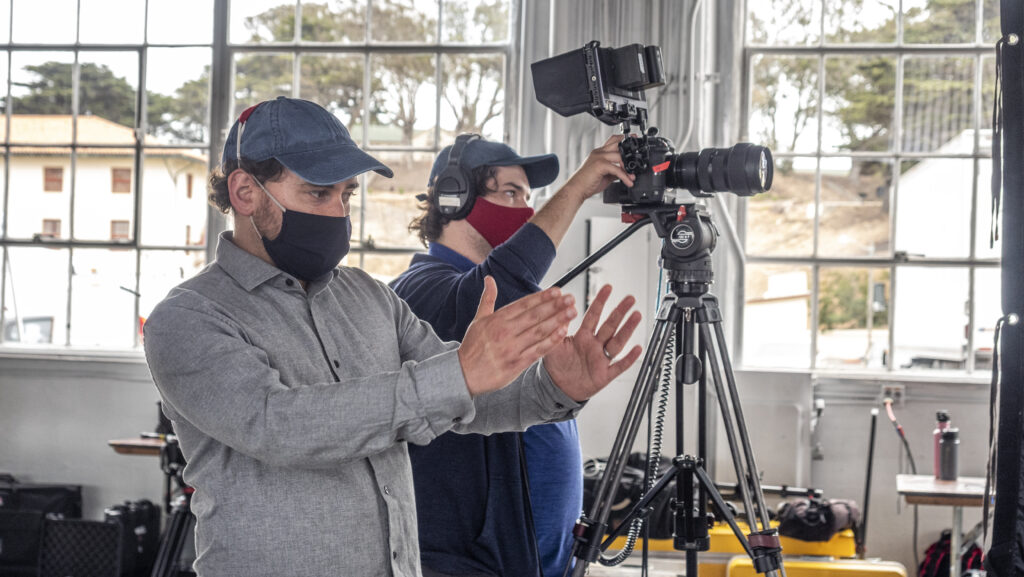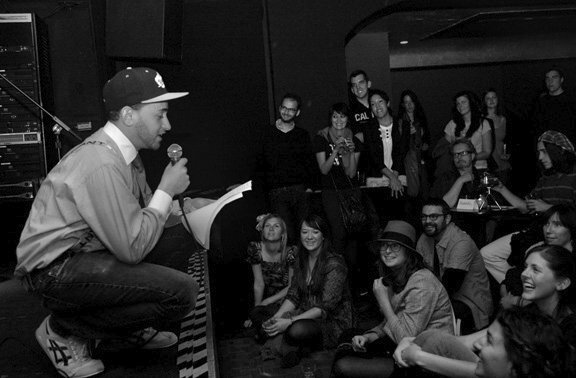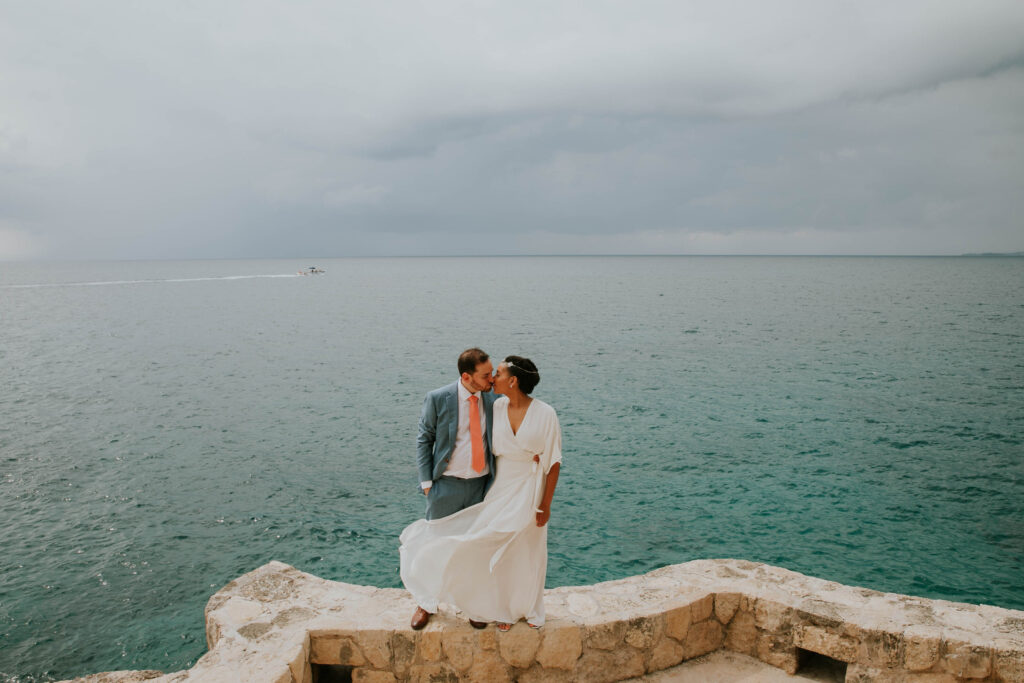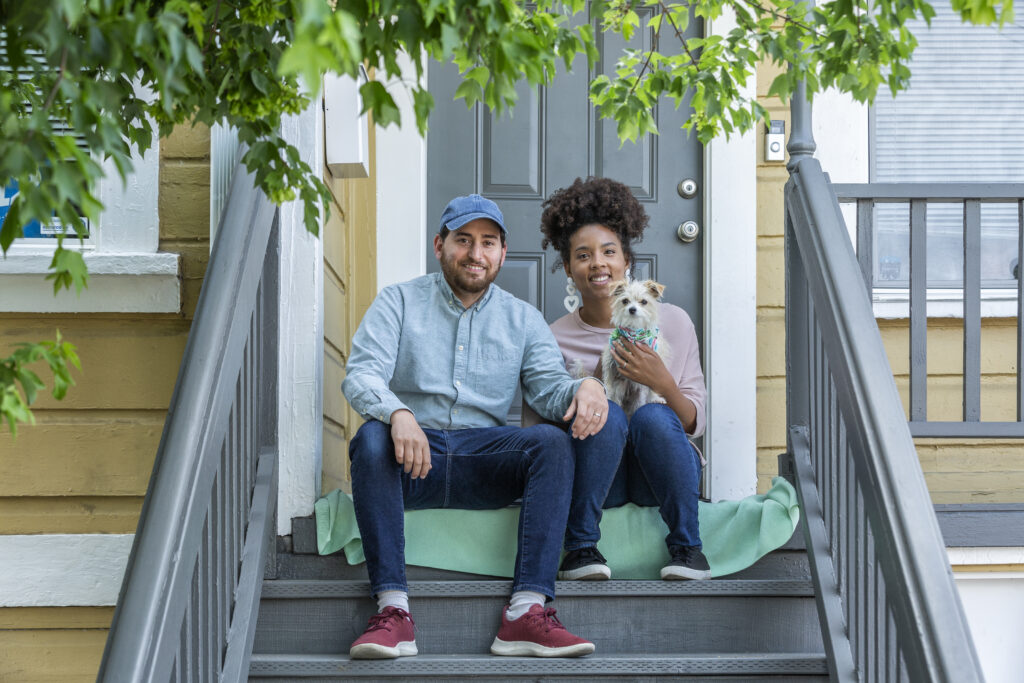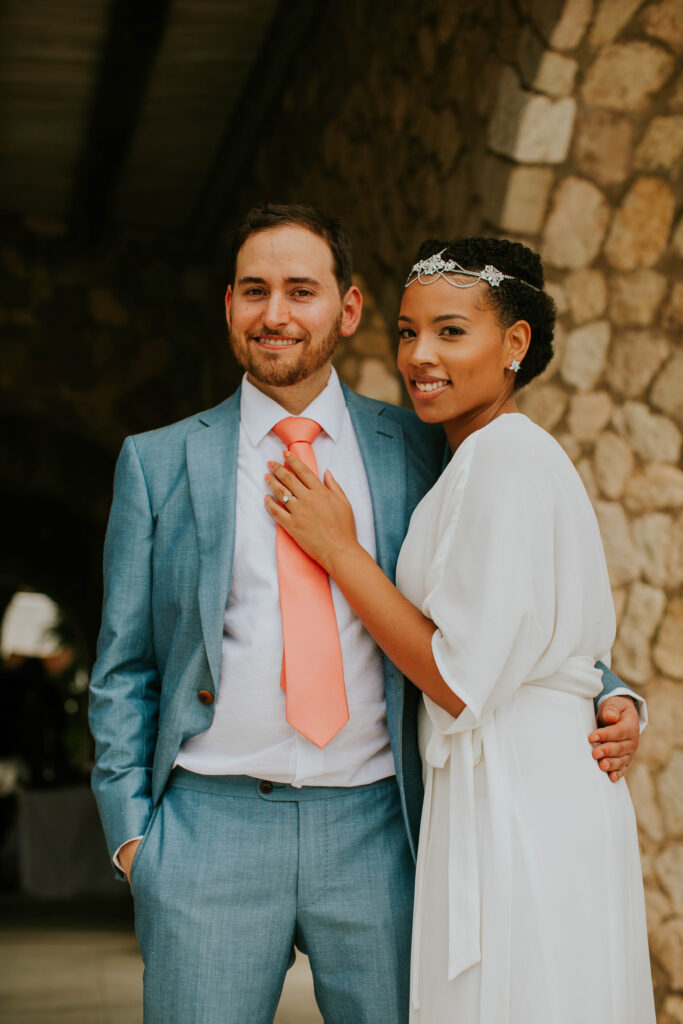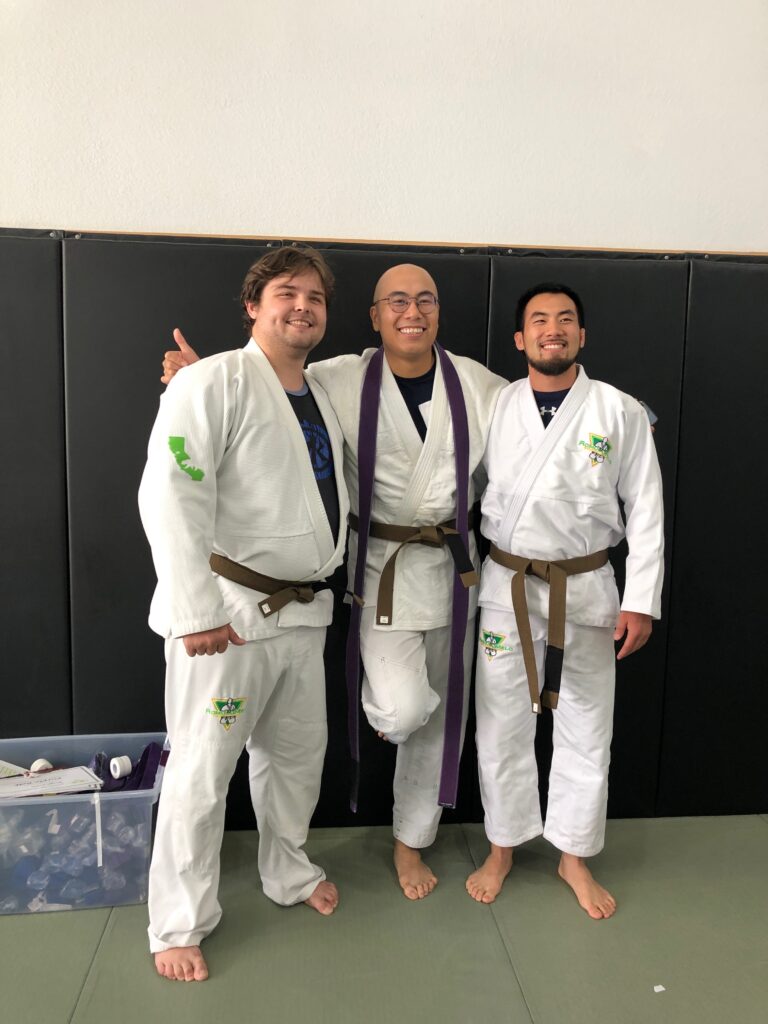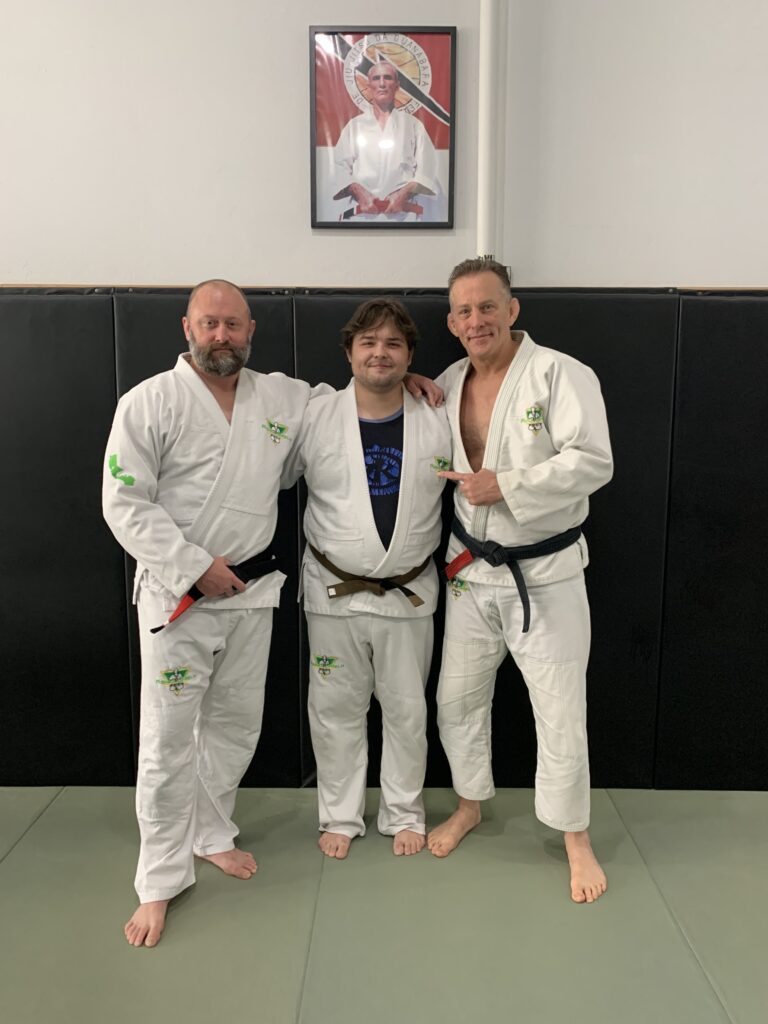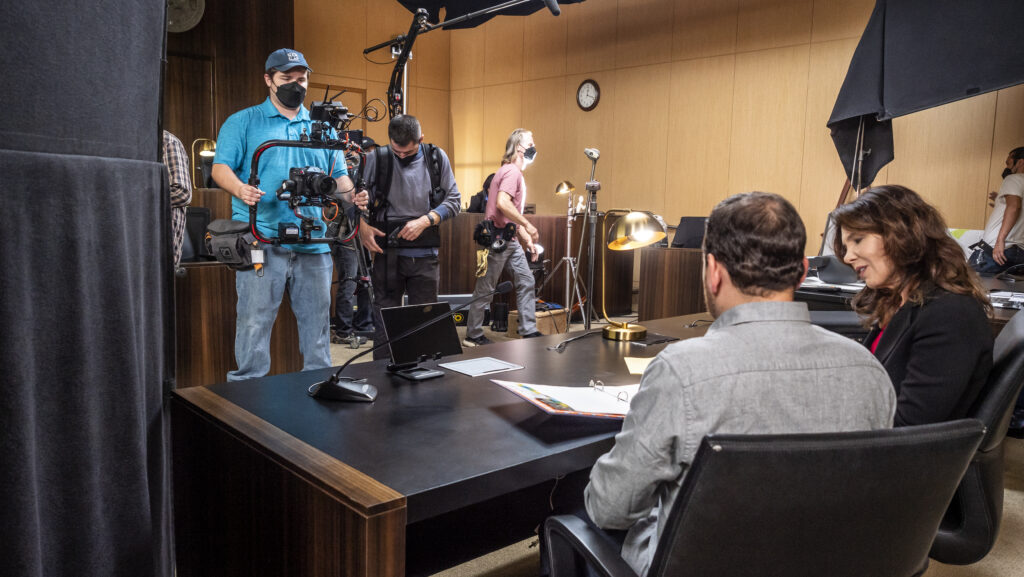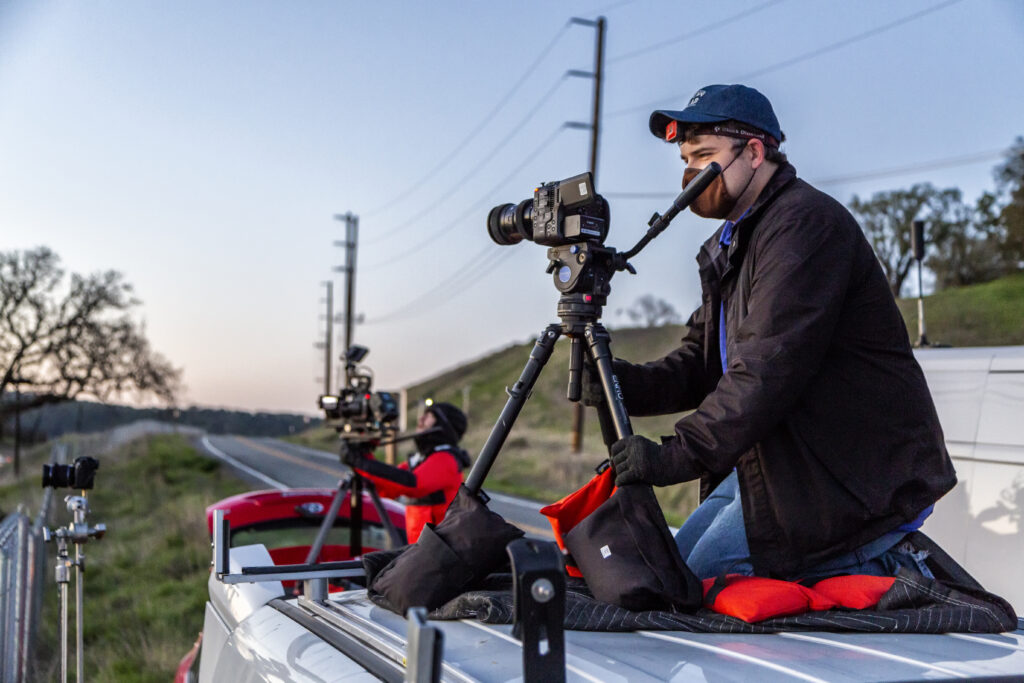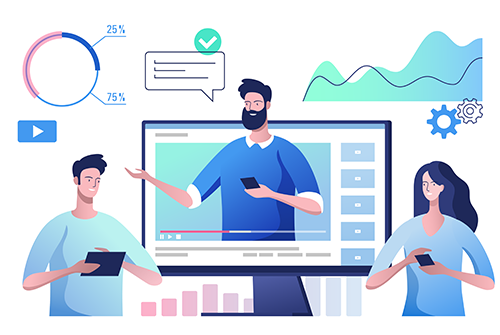Here at Slow Clap Productions, we are blessed with the opportunity to film in some amazing places with our corporate and commercial clients who like to think outside the box and venture forth from the office. Being in the San Francisco Bay Area, we are spoiled for choice! But there are some places so special that it’s worth giving them a shout out and, dare we say, a slow clap, for being over-the-top fantastic.
In no particular order, here are some favorite filming locations in our stomping grounds.
Samuel P. Taylor Redwood Forest
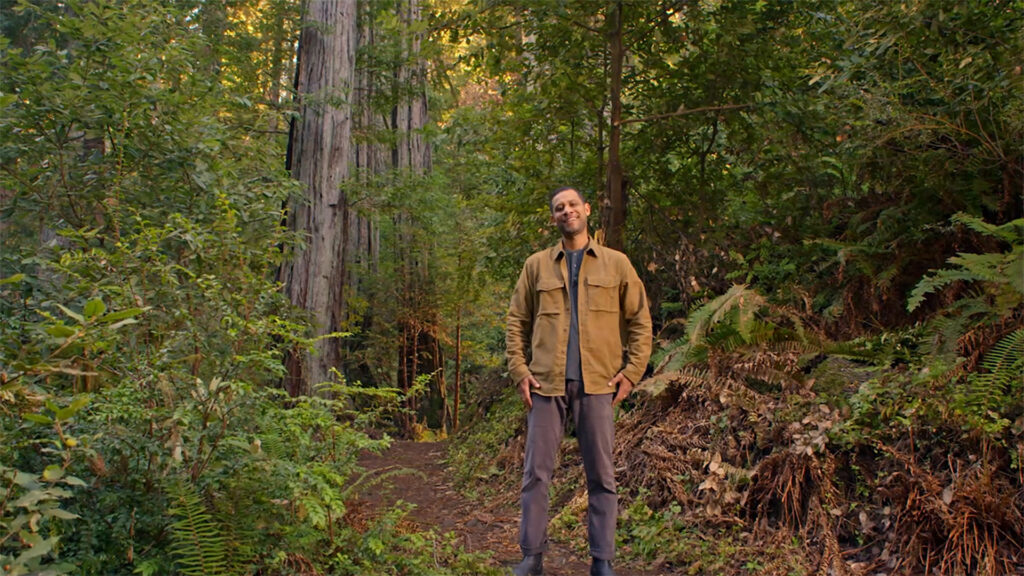
2,700 acres of Redwood trees. What’s not to love? This state park is located in Marin County and offers a quieter chance to commune with nature’s tallest trees than the more touristy Muir Woods. Also, you can camp there!
In 2022, we filmed Chris Young, General Counsel for Ironclad in these woods, which he calls his “happy place,” when things in the world get a little too crazy. This shoot may appear peaceful and zen-like, but we pulled out all the stops including a 12-foot jib, to capture the majesty of these woods.
Take a look at the full project and the BTS below.
Ironclad State of Digital Contracting Spring 2022
Salesforce Tower
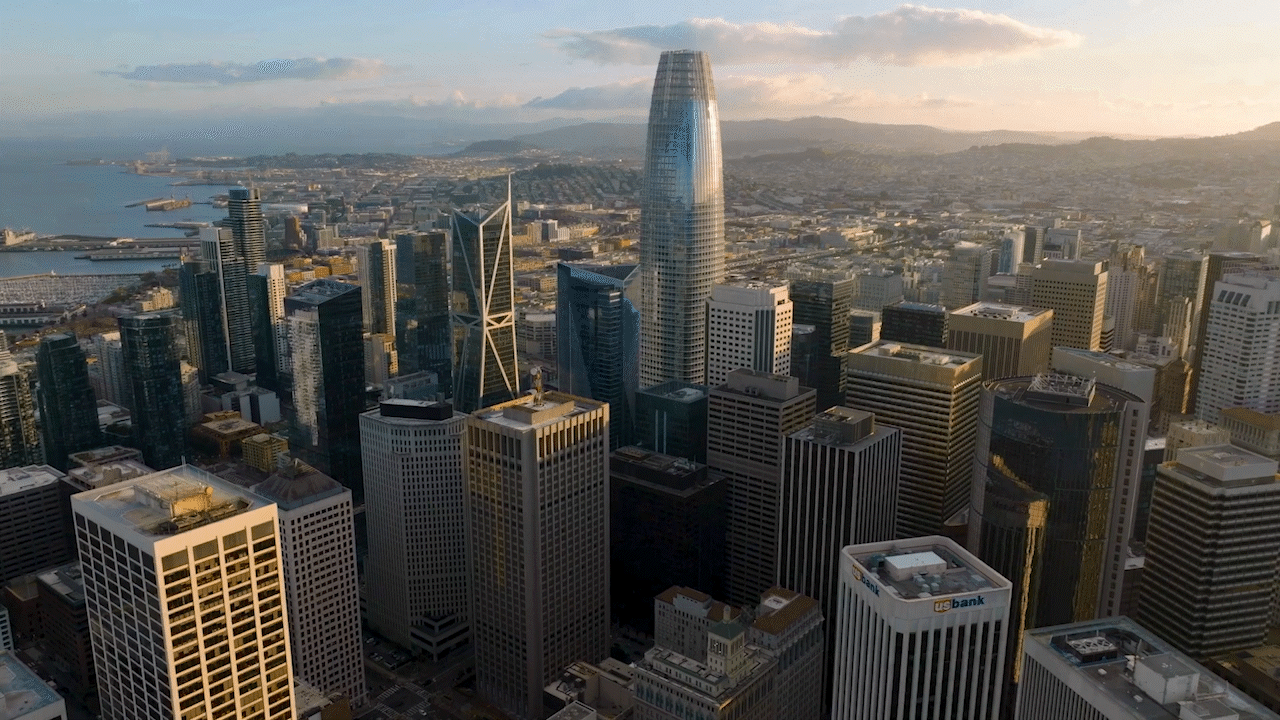
This tower is one of the newest additions to make the list of iconic structures in San Francisco. The six-year-old tower is the tallest in the city and the 12th tallest in the United States. It’s also home to the highest public art installation in the country!
You can catch sight of some of the interiors of the tower in this video we produced for the Asian Law Caucus. Gotta love those gorgeous windows and the view from the Covington and Burling office sees all of downtown San Francisco!
Asian Law Caucus: Covington and Burling
The San Francisco Waterfront via Heron’s Head Park
You can’t talk about the Bay Area without talking about the waterfront. It is the defining feature of the region, both geographically and in the name! While there are many breathtaking views to be had from all angles of the San Francisco Bay, one of our favorites is Heron’s Head Park. It’s a 22-acre, wetland park just south of Pier 96 that’s ideal for bird watching. It also features The EcoCenter, a 100-percent, off-the-grid, living classroom and visitor center. It’s a great place for kids and family to unplug from the hustle and bustle within the city limits.
You can catch views of the park alongside other iconic waterfront spots in this video we produced for The Port of San Francisco, which manages the waterfront:
The History of San Francisco Waterfront
San Lorenzo High School (SLZHS)
This high school is the perfect place to channel your inner Molly Ringwald or Judd Nelson ala The Breakfast Club. This school was built in the 1950s and just oozes vintage vibes with wood paneling and green chalkboards.
We filmed a 1980’s high school themed virtual event for Ironclad at SLZHS. We had an absolute blast getting our clients into character. Mary O’Carroll, Chief Community Officer for Ironclad, even got dropped off for “school” in a 1980s Porsche 911 and sported permed hair, a black leather jacket, and her Ironclad Academy “yearbook.”
Ironclad State of Digital Contracting Summer 2022
Bernal Heights
 Lea Loeb/ Golden Gate Xpress
Lea Loeb/ Golden Gate Xpress
- 360, breathtaking views of San Francisco and the Bay? Check.
- Wildflowers and wildlife (including coyotes)? Check.
- Hidden staircases and a scenic tree swing for selfies and IG reels? Check.
If you’re looking for a picturesque spot that’s a little off-the-beaten path, check out Bernal Heights, a residential neighborhood on a hill in the southeast portion of San Francisco. We love the spectacular views that aren’t typically seen in videos.
You can see what we mean in this video we made to showcase the San Francisco Treasury Kindergarten to College Program.
In the Bay Area, there’s always more to explore. Here are a few spots on our filming wishlist.
Hiller Aviation Museum
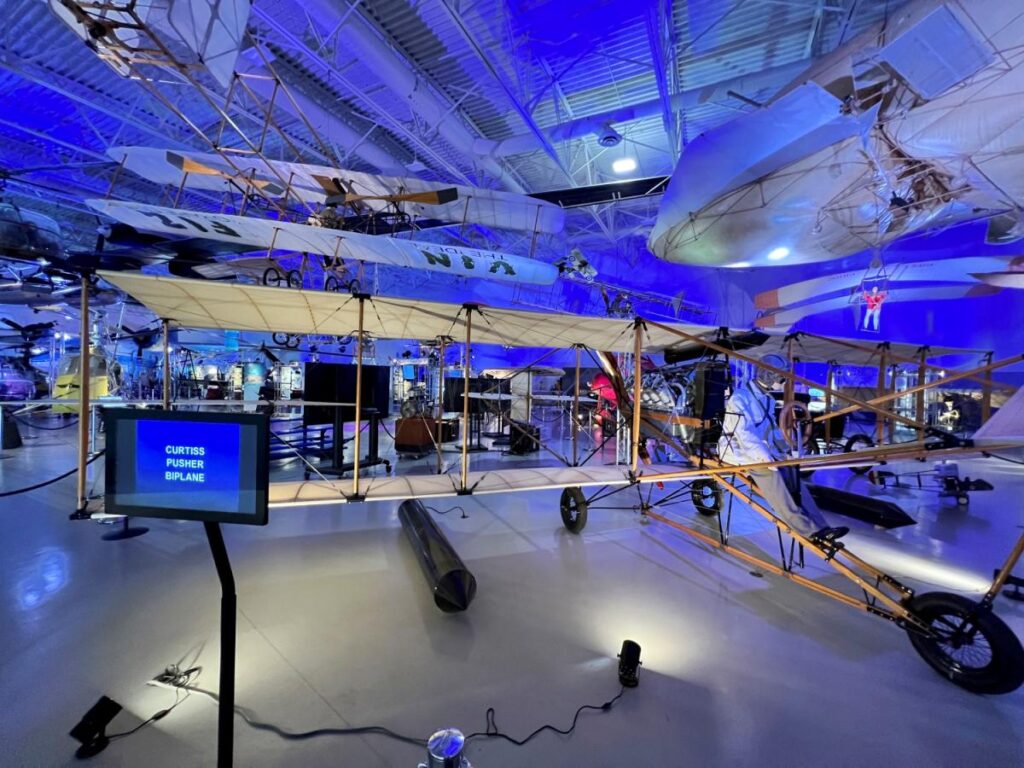
This collection specializing in Northern California aircraft and helicopter history will delight children and adults alike. Located at the San Carlos airport, the Hiller Aviation Museum features more than 50 aircrafts, many of which you can climb inside. It also boasts a replica of the first privately-financed commercial spacecraft; and no, it wasn’t manufactured by SpaceX! This museum is chock-full of visual delights that would be a dream to film.
https://www.youtube.com/watch?v=tlbAW7o0t7
Mama Dog Studios
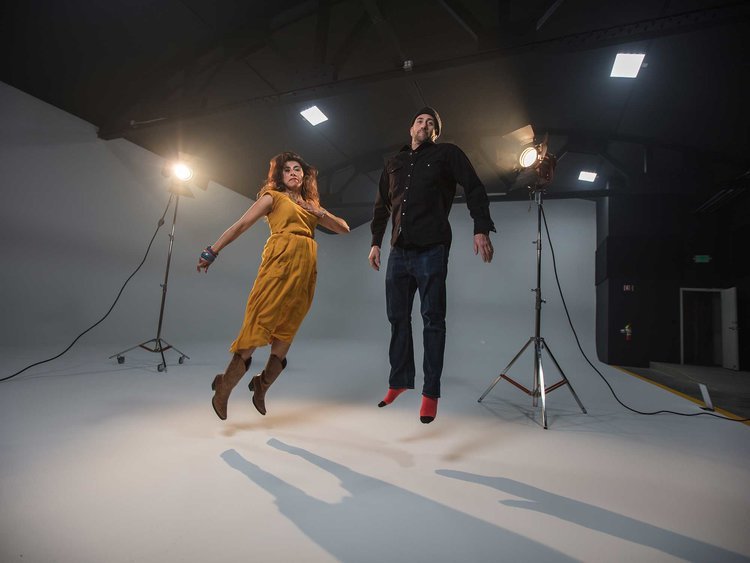
Mama Dog Studios is to Bay Area filmmakers what Carnegie Hall is to musicians: a second-to-none venue to showcase your craft. This 5,000 square foot production space features a drool-worthy, 35’ x 55’ cyclorama soundstage that we would love to play in. We hope 2024 will be the year that we have the opportunity to collaborate with one of our clients in this special space. Also, did we mention that they are a locally-owned, dog-loving business in the heart of Oakland? Clearly, we have a lot in common!
You can check out Mama Dog’s fabulous studio in this walkthrough video:
Point Bonita Lighthouse

Al Greening/ National Park Service
This historic lighthouse at the mouth of the San Francisco Bay is a beaut. At 306 feet above the sea, this picturesque watchtower in the middle of the Golden Gate National Recreation Area can only be accessed via a suspension bridge during fair weather. The half-mile trail to the lighthouse is also chock-full of spectacular sights, including views of the Golden Gate Bridge, paths through hand-carved tunnels, and observation points to spy marine life such as harbor seals, whales, and porpoises.
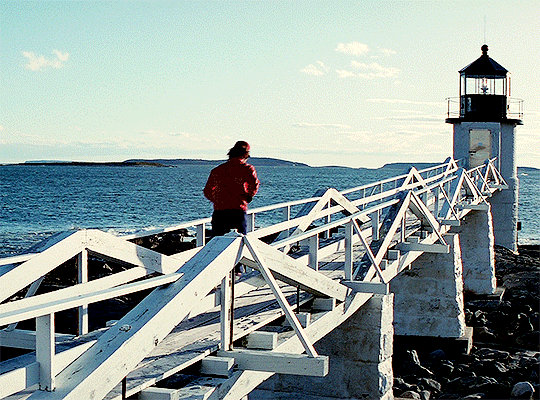
It may not be as famous as that lighthouse in Forrest Gump, but you can achieve a similar look at Point Bonita. We think it’s still a beautiful (bonita means beautiful in Spanish!) place to film.
Here’s a brief travel blog detailing the hike to Point Bonita:
https://www.youtube.com/watch?v=WRYgpvRVCbY
Got any spots we’ve missed? Or, are you dreaming of a video in a fabulous locale? We’d love to hear from you! We’re available to help you achieve your next project at hello@slowclap.com.
Blogs to check out:
Tips for Great Video Production at any Budget
Why Your Company Needs Branded Content
How to Maximize Views for Your Video Content
